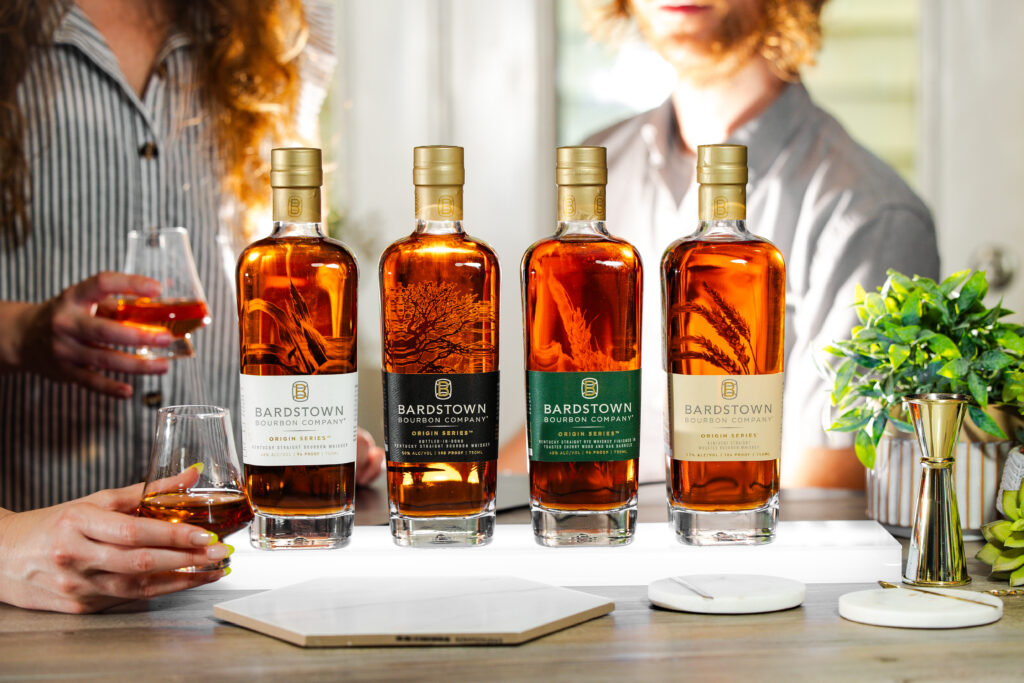
“Wait… isn’t bourbon just whiskey?”
It’s one of the most common questions asked by curious sippers and new whiskey drinkers alike. And honestly? It’s a fair one. The labels can be confusing. The language is steeped in tradition. And when you’re staring at a wall of bottles with names like “single malt,” “rye,” “bourbon,” or just plain “whiskey,” it’s easy to wonder if these terms actually mean anything or if it’s all just marketing.
So let’s clear the air.
All bourbon is whiskey. But not all whiskey is bourbon.
Kind of like how all squares are rectangles, but not all rectangles are squares.
Bourbon is a specific type of whiskey with very strict legal standards, born in the United States and shaped by the country’s rich distilling history. Whiskey, on the other hand, is the broader category, a global spirit made in a variety of styles from Scotland to Japan to Kentucky.
In this modern guide, we’ll break down the key differences in production, ingredients, flavor, and legal definitions. Whether you’re brand new to the whiskey world or looking to deepen your understanding, we’ll help you tell your bourbons from your scotches—and introduce you to some innovative expressions from Bardstown Bourbon Company that are redefining what bourbon can be.
Let’s get into it.
Whiskey 101: A Global Spirit
First, let’s get a little wider. Whiskey is a worldwide spirit with ancient foundations and varied iterations. Essentially, whiskey is distilled liquor comprised of a grain mash that’s been fermented, distilled, and then aged in wooden containers. That’s the general definition. From there, things get even more interesting.
These are the typical main categories of whiskey you can find around the world:
- Scotch (Scotland): Scotch must be made at a distillery in Scotland using water and malted barley, though other whole cereal grains may be added. It’s mashed, fermented with yeast, and distilled to less than 94.8% ABV, then matured in oak casks (no larger than 700 liters) in Scotland for at least three years. Additives are limited to water and plain caramel coloring.
- Irish Whiskey: Made in the Republic of Ireland or Northern Ireland, Irish whiskey is usually a blend of malted and unmalted barley and often triple-distilled for smoothness. It must be aged at least three years in wooden casks and bottled at no less than 40% ABV. You’ll rarely find smoky notes here because peat is not commonly used.
- Canadian Whisky: Canadian whisky must be mashed, distilled, and aged in Canada, typically using a blend of grains like corn, rye, wheat, and barley. It must rest in small wood barrels for a minimum of three years and be bottled at or above 40% ABV. Flavoring and caramel coloring are permitted.
- Japanese Whisky: Japanese whisky must be made entirely in Japan, from sourcing water and grains to distilling, aging, and bottling. Distillation can’t exceed 95% ABV, and aging must take place in wooden casks (no more than 700 liters) for at least three years. Like Scotch, Japanese whisky allows plain caramel coloring but nothing else.
- American Whiskey: Here in the U.S., whiskey takes on many forms, each with strict standards.
- Bourbon: At least 51% corn, distilled below 80% ABV, aged in new charred oak containers at no higher than 125 proof (the alcohol content of the bourbon when it is placed in the barrel must be 62.5% alcohol by volume or less), and bottled with no additives except water. It can be made in the U.S., not just Kentucky.
- Rye Whiskey: Follows the same rules as bourbon but is made with at least 51% rye for a spicier profile.
- Tennessee Whiskey: Meets bourbon standards and must be charcoal filtered for added smoothness.
- Wheat Whiskey: Made from at least 51% wheat, this style is typically softer and lighter on the palate. It must also follow the same aging and barrel requirements as bourbon.
- Corn Whiskey: With at least 80% corn in the mash bill, corn whiskey offers a sweeter, grain-forward flavor. It doesn’t have to be aged, but if it is, it must be stored in either uncharred or used oak barrels.
- American Single Malt: An emerging category, American single malt must be made from 100% malted barley at a single distillery. It’s typically pot-distilled and aged in oak, much like its Scotch counterpart, but with a distinctly American character.
“Whiskey” is the broad umbrella. Bourbon is a branch on the tree, and probably the most distinctive spirit of the US.
What Makes Bourbon, Bourbon?
Bourbon is a legally recognized type of American whiskey with regulations that distinguish it. To be labeled bourbon, a spirit will have to adhere to very particular requirements based on U.S. law. Here’s what makes bourbon, well, bourbon:
- It has to be distilled in the United States
- The mash bill (grain recipe) has to be at least 51% corn
- It has to be aged in a new, charred oak container
- It must be reduced to not more than 160 proof
- It must be put into the barrel at not more than 125 proof
- It must be bottled at 80 proof or greater
- It must have no added flavorings, coloring, or additives
These rules may seem strict, but they’re part of what gives bourbon its signature profile – bold, rich, slightly sweet, with warm notes of vanilla, oak, and spice. The use of new, charred barrels is especially key, infusing bourbon with deep caramel color and robust flavor.
Bardstown Bourbon Company embraces every one of these standards, but with a fresh take. We’re proud to offer two standout expressions:
- Bardstown Bottled-In-Bond Bourbon: This expression keeps the classic 51% corn foundation but swaps the traditional rye grain for wheat in the mash bill, resulting in a smoother, softer, and more approachable pour. As a Bottled-in-Bond bourbon, it meets the strict standards of the 1897 Bottled-in-Bond Act: distilled in one distillation season by one distiller at one distillery, aged at least four years in a federally bonded warehouse, and bottled at exactly 100 proof.
- Bardstown Rye Whiskey: Stays true to form with a generous measure of rye, bringing spice and structure without sacrificing balance.
Both are Kentucky rye whiskey aged six years and distilled entirely on-site. They go through a double-barrel process with a hybrid cherry barrel, adding a rich layer of complexity and offering authenticity, depth, and contemporary sophistication with each sip.
Busting Common Bourbon Myths
Myth 1: Bourbon must come from Kentucky.
Not quite. While bourbon must be made in the United States, it doesn’t have to come from Kentucky. That said, there’s a reason Kentucky is so closely associated with bourbon; its limestone-rich water, seasonal climate, and deep distilling roots make it the heart of American whiskey culture.
Bardstown Bourbon Company is proud to call Kentucky home, specifically, Bardstown, the Bourbon Capital of the World.
Myth 2: All whiskey tastes the same.
Hardly. From mash bills to barrel types to aging styles, every whiskey has a story to tell. Bourbon’s corn-dominant sweetness and new charred oak aging impart its own distinctive flavor that’s different from all others.
Myth 3: Bourbon is too strong or harsh for beginners.
Not really, at least not if it’s done well. Our Origin Wheated Bourbon is designed with drinkability in mind, making it perfect for new drinkers.
Myth 4: Older always means better.
Age can bring depth, but it’s not the only quality indicator. Our six-year estate-distilled Origin Series proves that balance, creativity, and attention do more than time.
Why Bardstown Bourbon Company Is Leading the Way
At Bardstown Bourbon Company, we’re more than a distillery, we’re a destination, a community, and a modern force in American whiskey.
We combine time-honored techniques with forward-thinking technology to craft spirits that respect tradition while speaking to today’s drinker. Transparency is at the heart of everything we do. You should know exactly what’s in your glass, how it was made, and why it matters.
The Origin Series marks a bold new chapter, our first estate-distilled collection, created entirely on-site in Bardstown, Kentucky. From grain to bottle, these expressions represent the future of bourbon: thoughtful, approachable, and full of character.
Whether you’re just beginning your whiskey journey or looking to explore something new, the Origin Series is the perfect starting point. Our wheated and high-rye mash bills offer smooth, nuanced flavor with every sip, designed to welcome, intrigue, and inspire.
Visit us in Bardstown, explore the full lineup, or take home a bottle and experience a new kind of bourbon tradition, crafted with care, made for now.

